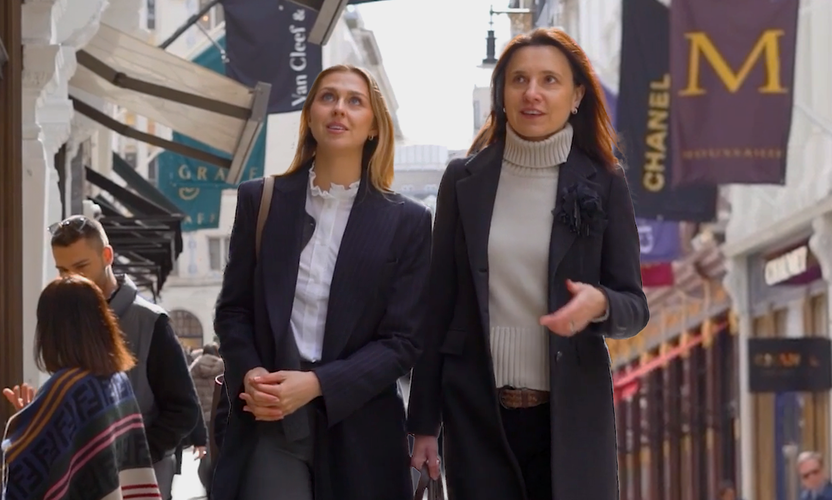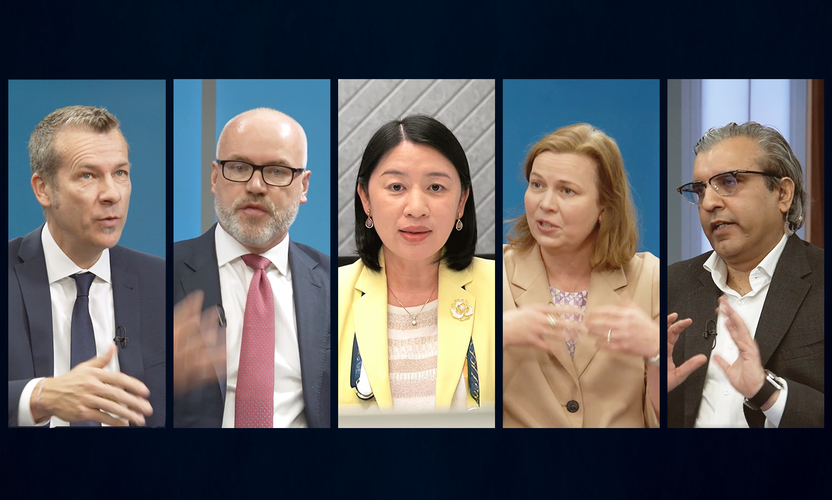Social distancing, low retail footfall, working from home: the Covid-19 pandemic has presented a unique set of challenges for the real estate sector in 2020 and the effects will continue in 2021, accelerating some trends and disrupting others.
European retail under pressure
Most noticeably, the crisis has accelerated structural changes in how people shop, increasing online retail spending at the expense of the High Street. Continental European consumers had been slower than their counterparts in the UK, the US and China in embracing online shopping.
But they made up some of this ground in 2020, increasing online sales 20.6 per cent year on year between February and May, and could continue to do so amid a second wave and further lockdowns.
We expect European retailers to reduce their store numbers and switch their focus to online portals, increasing vacancy rates in second-tier high streets and shopping centres, and putting even more pressure on values.
This will discourage short-term investment in the sector, reducing market liquidity and further reducing prices, but also perhaps prompting a longer-term rethink of how these spaces will be used in the future. As an example, Inditex, the company behind names like Zara and Massimo Dutti, recently announced its intention to achieve 25 per cent of total sales from online (up from 14 per cent in 2019).
It also plans to close 1,000-2,000 stores over the next two years. As part of this strategy, it is investing in stores that are ’fully-integrated, digital and eco-efficient’, and closing smaller stores reaching the end of their life cycle. Elsewhere, the hospitality sector is facing increasingly difficult times. The European Commission estimates revenue losses of 50 per cent for restaurants and cafes in 2020.
Areas dependent on tourism, such as France, Spain and Italy, are likely to be the worst hit. Prices in the market are yet to reflect fully the Covid crisis, with government and monetary support for the economy helping to buoy values, alongside the weight of global capital hungry for yield.
This is having some strange effects. For example, in Germany, commercial real estate is already more expensive than before the pandemic, while in the UK, the price adjustments have been modest and are perhaps more a reflection of Brexit risk.
The death and rebirth of the office
The outbreak has also had a huge impact on office usage, accelerating a work-from-home trend that had been increasing at around 3 to 4 percent a year before the crisis. In the UK, remote working hit a high of 38 per cent in June 2020, according to the Office for National Statistics.
Despite this acute crisis, we believe offices are central to collaborative work and corporate growth as well as employee well-being, and will remain with us for many years to come. Office usage may be different of course.
The layout and facilities offered may change in the future, with fewer desks crammed in and a greater emphasis on imaginative and collaborative spaces. Even if in-person office work drops from five days a week to four or three, aggregate demand for offices may still increase as other purposes are found for the space and the economy recovers from this crisis.
These trends will not be evenly distributed, meaning that analyst research, active asset selection and careful portfolio management will be more important than ever.
While there is no doubt that 2020 has been a challenging year for commercial real estate, we are mindful that, with the extraordinary global efforts to develop a vaccine to combat the virus, we could see a return to a more normal way of working and shopping in 2021.
Better data collection leads to increased focus on sustainability
Investors are planning for the longer term when it comes to refurbishment of properties to improve the performance of energy and social factors. We believe ‘green leases’ are fast becoming the new norm, where the tenant and landlord will be obliged to fulfil respective environmental commitments, such as providing energy use data. This will improve transparency for investors.
Improved data collection on energy usage and increased certification, such as the Global Real Estate Sustainability Benchmark, are driving environmental and social factors to the forefront of investors’ minds. The environmental sustainability of an asset is now both more measurable and more desirable, to the extent that it ranks alongside, and sometimes above, yield and performance in the list of priorities for clients.
New buildings are subject to ever more stringent regulations, particularly in the era of sustainability and energy conservation. Increasingly, a building without the best environmental characteristics will struggle to find tenants. This trend is leading to an increased focus on refurbishing existing stock as the real estate industry aims to play its part in minimising carbon emissions.
We have observed that only around 1 per cent of building stock is replaced each year, which means that the majority of buildings that will be with us in 2050 have already been constructed. We therefore believe that retrofitting older buildings will be better for the environment than focusing on the characteristics of new builds.
In the land of low income, real estate is royalty
The monetary policy response to the Covid-19 crisis has further repressed traditional sources of income such as government bonds and has lowered real yields to rock-bottom levels.
Real estate is attractive in such an environment and remains popular with income-seeking investors despite being less liquid than other asset classes.
Yields may be historically low for property, but 3.5 per cent a year still beats most government bonds. Different sectors are reflecting the alternative impacts of the crisis in their prices.
Growth in online retail is spurring demand for logistics and warehouse assets, which are starting to look expensive. On the other side, High Street retail is starting to look quite cheap and may present opportunities in the medium term as conditions settle. Meanwhile, data centres, healthcare and mixed-use properties are embedding themselves in long-term portfolios to an extent that we haven’t seen before.
While there is room for rents to fall further as the crisis grinds on into 2021, real estate remains an attractive option for investors seeking a sustainable source of high-quality income over the longer term.








































